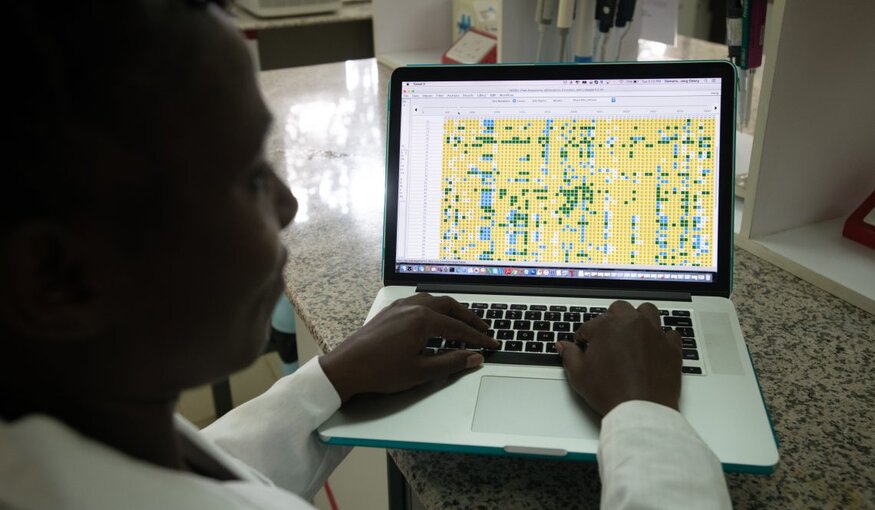Accessible Software for Accessible Seeds

25 May 2022
As any plant breeder and researcher will tell you, it’s all about the data. It’s the data that allows them to make smart choices about the crops they breed, speeding up the process of getting new varieties into farmers’ fields and your local market.
But there are times when the power of data is limited by your ability to make full use of it. Unfortunately, learning to use new software and data analysis tools can be especially challenging during a pandemic, when in-person training is often impossible.
That is why, with support from the Crop Trust-led Templeton Pre-Breeding Project, the James Hutton Institute has developed a set of web-based training materials to help people use its software applications, which host experimental data about crop diversity and allow users to analyze and visualize the data in different ways.
The new, self-paced learning guides, which include around 20 short videos and exercises, are designed to support users of different levels of expertise. Some scientists don’t know much about the software because they may only need to use it occasionally. Others may know more, but about earlier versions. All could do with some help.
“When a new piece of software comes along, there is always a steep learning curve,” says Paul Shaw, a senior research scientist at the James Hutton Institute in Dundee, Scotland. “Even if people spend only 15 minutes a couple of times a week on the training, these short videos will help them get the most out of the data. This, in turn, could be crucial to the development of future, climate-adapted crops.”
Crops in Focus
The pre-breeding project supported by the Templeton World Charity Foundation focused on finger millet and grasspea—two crops important to food security in a number of countries but relatively neglected in terms of research, development and data availability.
Finger millet is a nutritious crop that is well adapted to the harsh conditions caused by climate change, offering a reliable food source in times of drought and crop failure. However, it is prone to several diseases (blast, tar spot and leaf blight), challenging breeders to find resistance.
“Finger millet is not only climate-resilient but also nutrient-dense and is, therefore, a great choice for food and nutritional security in regions most affected by climate change,” says Damaris Achieng Odeny, a research cluster leader at the International Crops Research Institute for the Semi-Arid Tropics (ICRISAT) in Nairobi, Kenya.
“Improving information flow for finger millet would empower breeders, farmers and consumers with respect to the crop's improvement, production and use,” adds Odeny.
Grasspea is cultivated both as livestock fodder and as a grain crop for humans. Capable of withstanding drought and flooding, it can offer a nutritional lifeline when other crops fail. But grasspea naturally contains a neurotoxin that can cause a paralyzing disorder called lathyrism when consumed in large amounts over long periods. Breeders are therefore trying to develop non-toxic varieties that still retain the crop’s environmental resilience.
“At the moment, the software training materials we’ve developed offer general guidance to get users up to speed with the software,” Shaw says. “However, in the first half of next year, we will release final versions specific to finger millet and grasspea, in which we actually show users how to do analyses relevant to these crops and the problems they face.”
Three Applications, One Goal
The training materials will help scientists navigate the Germinate databases, which can be used to view and select crop diversity data and analyze it using special visualization tools.
Similar tutorials will be available for Flapjack, a program that enables users to compare genetic data (for example, the presence of particular DNA markers on particular chromosomes) by visually displaying similarities and differences between plants, and Helium, an application that helps breeders determine the genealogy of a plant.
The potential audience for such training segments is considerable; Flapjack has more than 11,000 users worldwide, and the Germinate databases for crop wild relatives have attracted around 1,500 unique users so far.
“Easy access to experimental data from pre-breeding projects is vital to ensuring that the crop diversity generated is incorporated into breeding and research programs,” says Benjamin Kilian, who coordinates the Templeton Project at the Crop Trust. “These training materials will promote a better understanding of crop diversity databases so that users can benefit fully from the latest available data and from future innovations to the various platforms.”
Pandemic Realities
The online format of the training materials overcomes logistical challenges caused by COVID-19. Two years into the pandemic, large gatherings and coaching seminars, once a routine feature of working life, are being replaced by multimedia tools to achieve the same goals.
“Even when the COVID-19 situation eases, we expect people will be much more selective about the trips they take,” Shaw says. “They will be looking for other ways to meet their professional needs. Instead of attending a talk in person, they might prefer a video recording, which can be just as effective and even more polished with voiceovers and other effects.”
Categories: For Partners, BOLD, Crop Wild Relatives, Templeton Pre-Breeding Project

